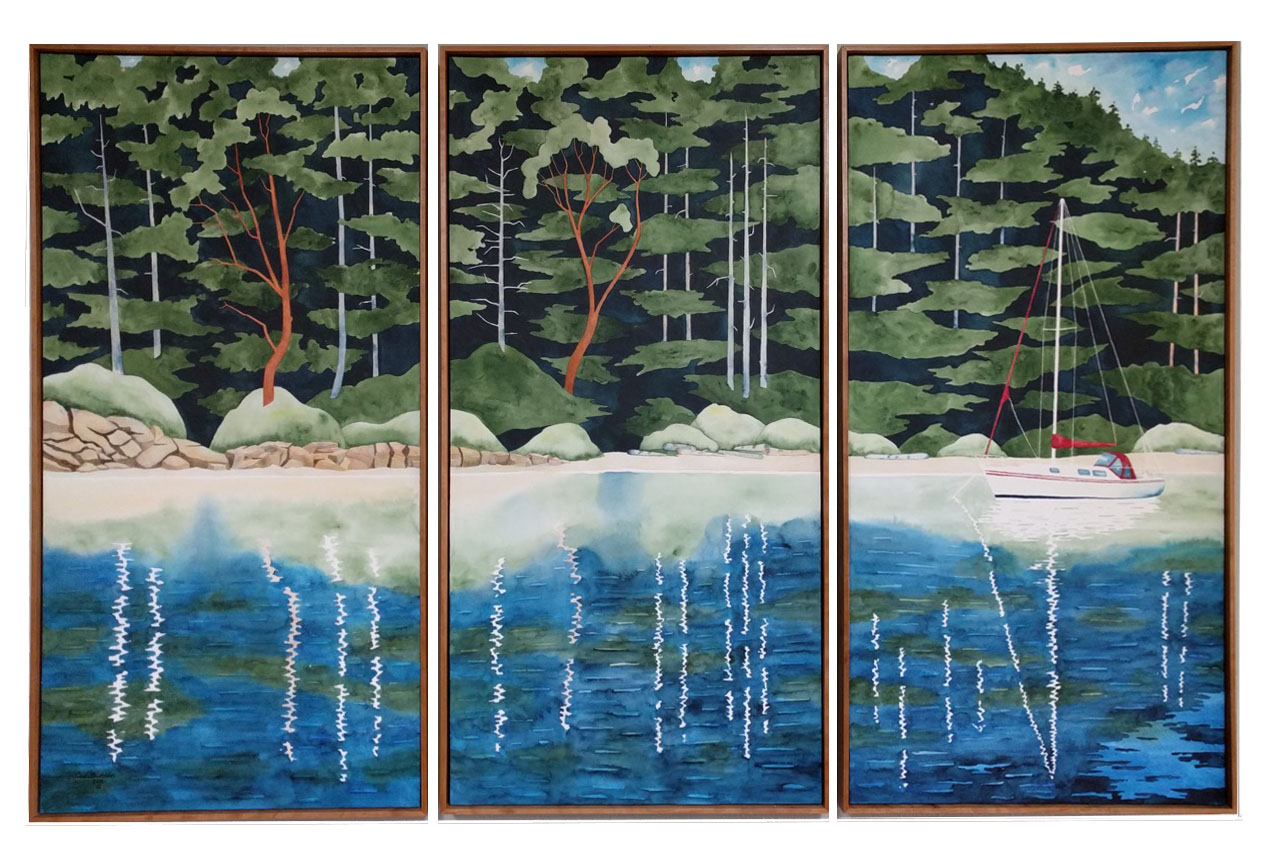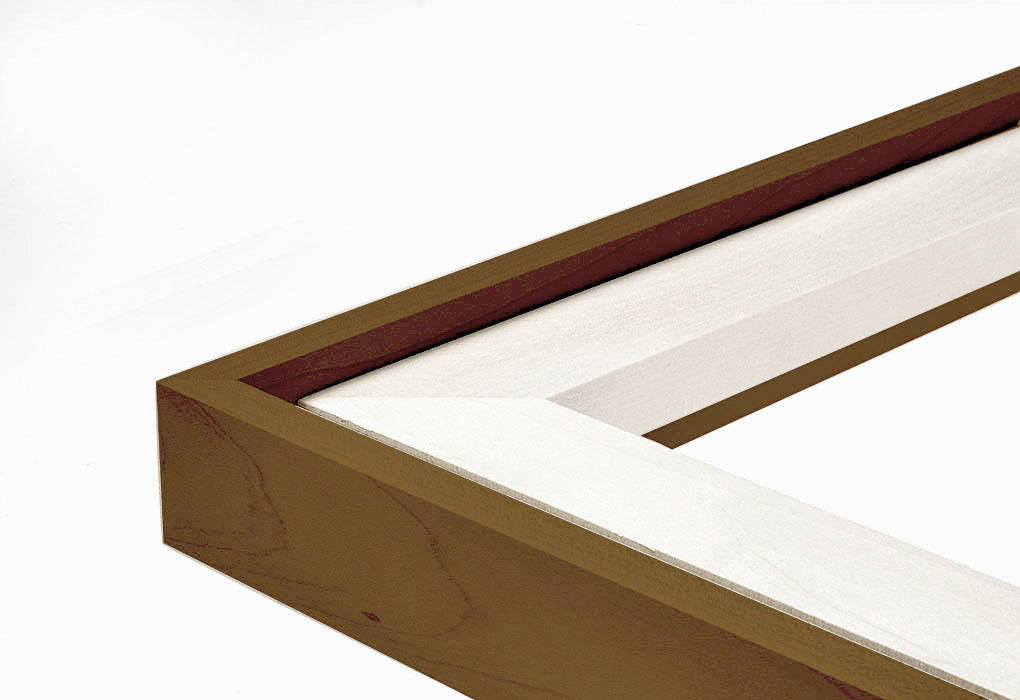Carl Buttke “Reflections” watercolor series
We are always interested in how our customers frame their artwork. When talking with Carl Buttke we learned that he painted watercolors and framed them without glass or acrylic. I asked him if we could share the process he uses with our customers. He generously agreed to tell us how he protects the watercolors from dust, moisture, and even water.
ABOUT THE WORK
Currently I am painting a series I refer to as “Reflections”. These are watercolor paintings meant to convey the mystery between the real and imagined by painting images of forest reflections on our waters of the San Juan Islands.
I paint these images abstractly using an abundance of water and a heavily loaded brush with paint either laid directly onto the paper or into a pool of water already laid down on the paper. I use hot press watercolor paper having a smooth surface on which to lay the pool of water or paint. This series lends itself to a limited pallet dominated by Hooker's Green and Indigo and the mixing of colors on the paper rather than on the pallet. For example, the dark almost black areas conveying shadows in the forest is accomplished by laying down a pool of Indigo into which is added Hooker's Green and then mixed on the paper to produce a deep dark and alive color. The result is a painting unique for watercolor with vibrant deep contrasting color, mostly low key, with varying intensity and texture.
My paintings are then finished to display them without having to be framed behind glass thus eliminating glare of light on the artwork. I stretch and mount hot press watercolor paper on a framed or cradled panel such as Ampersand Gessobord or Claybord with a Natural pH adhesive. When the painting is finished, I spray it with Golden Archival Varnish to seal the painting and provide UVLS protection to reduce light damage. It is then sealed again with Dorland's Wax, which adds a unique texture to the surface of the painting. This coating results in protection against dust, moisture, and even water. I have used this process for paintings varing in size from 12 x 9 inches to 60 x 30 inches.
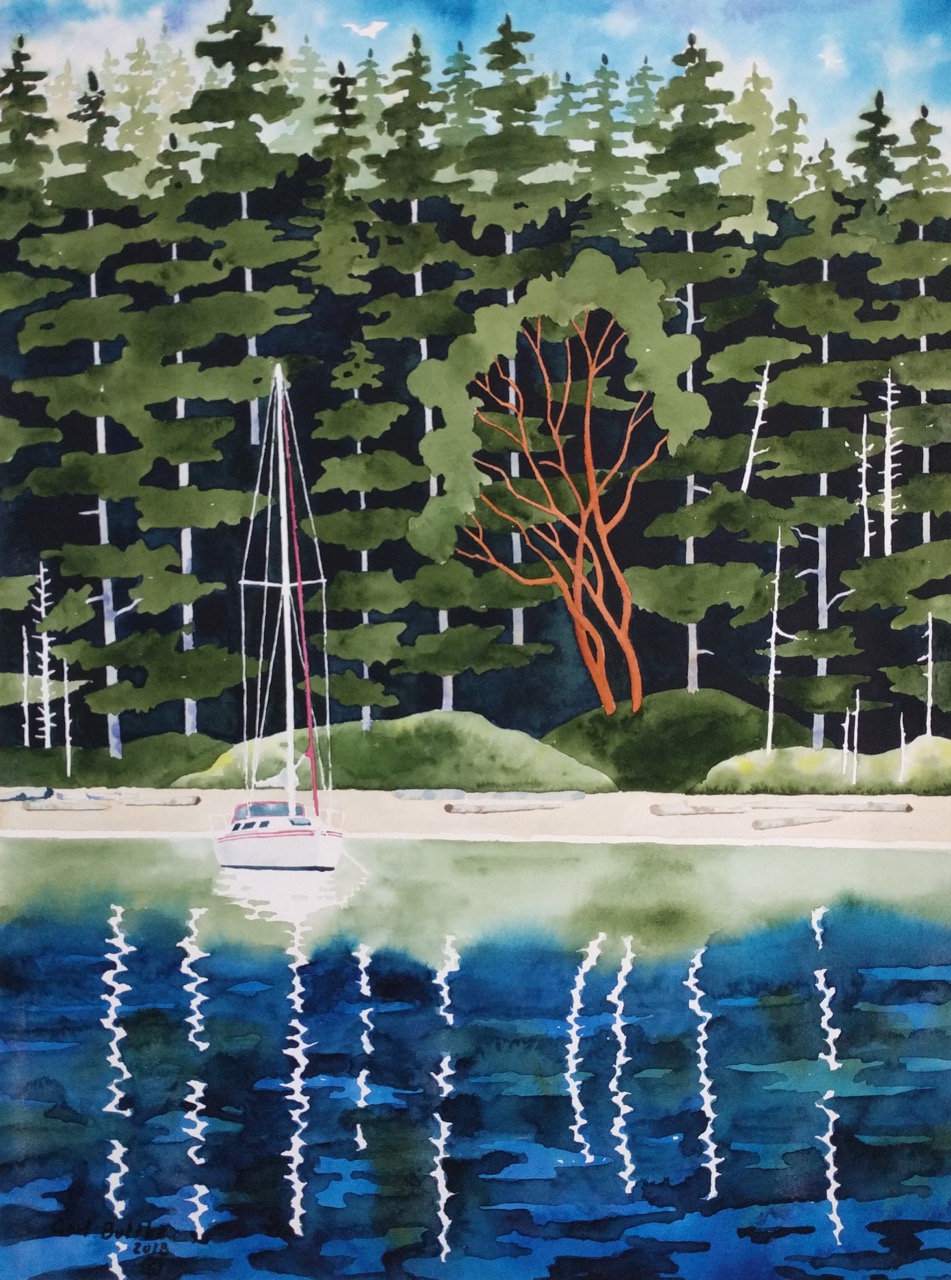
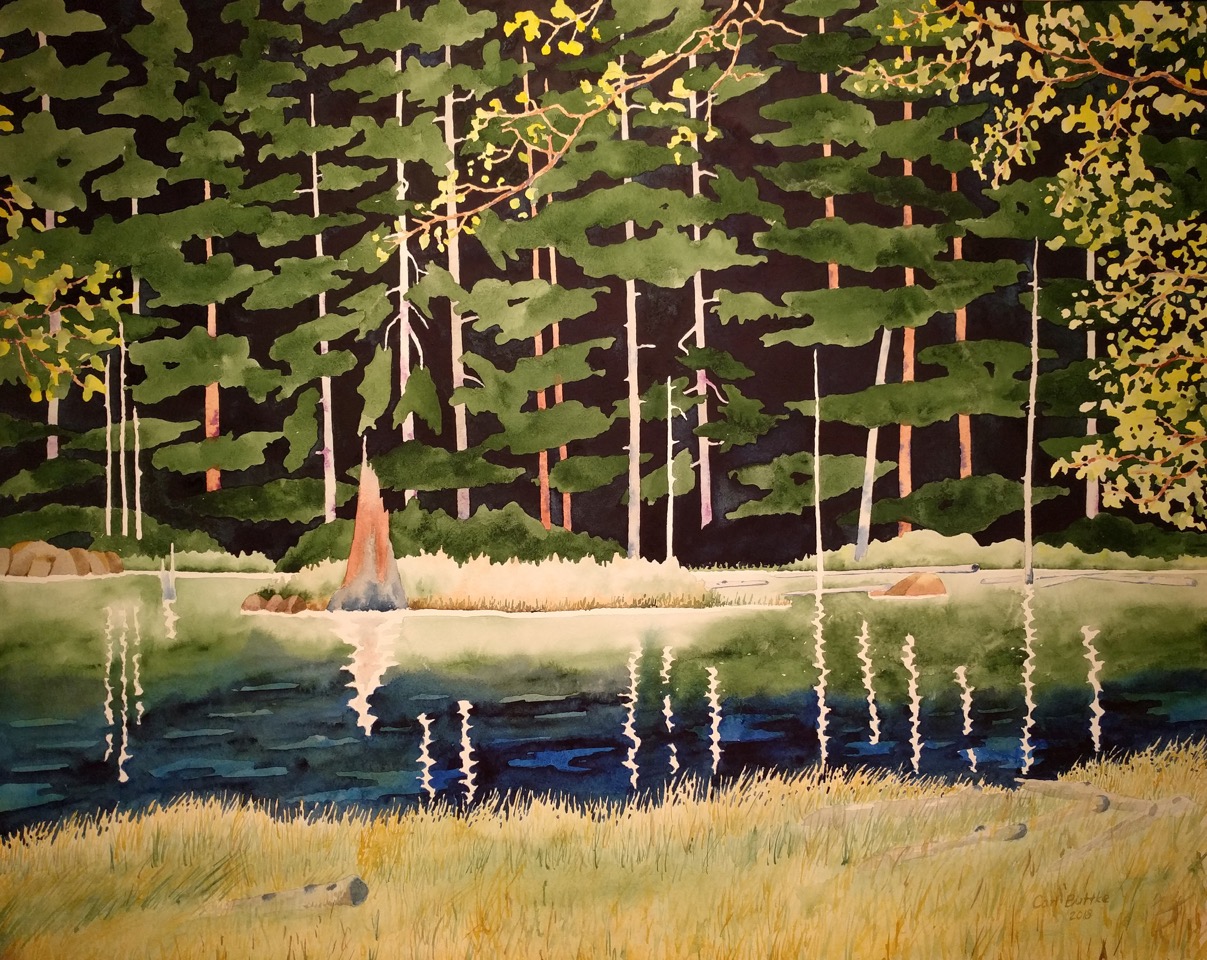
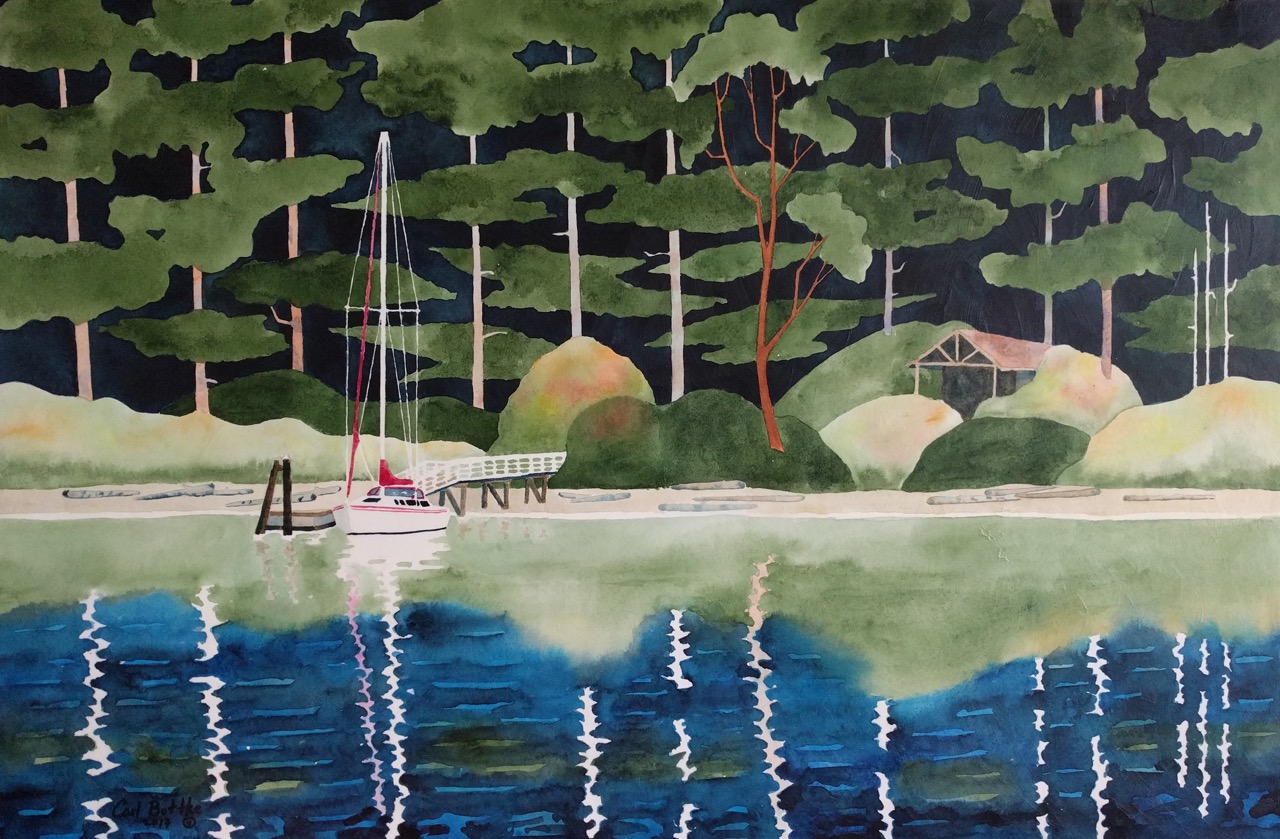
ABOUT THE ARTIST
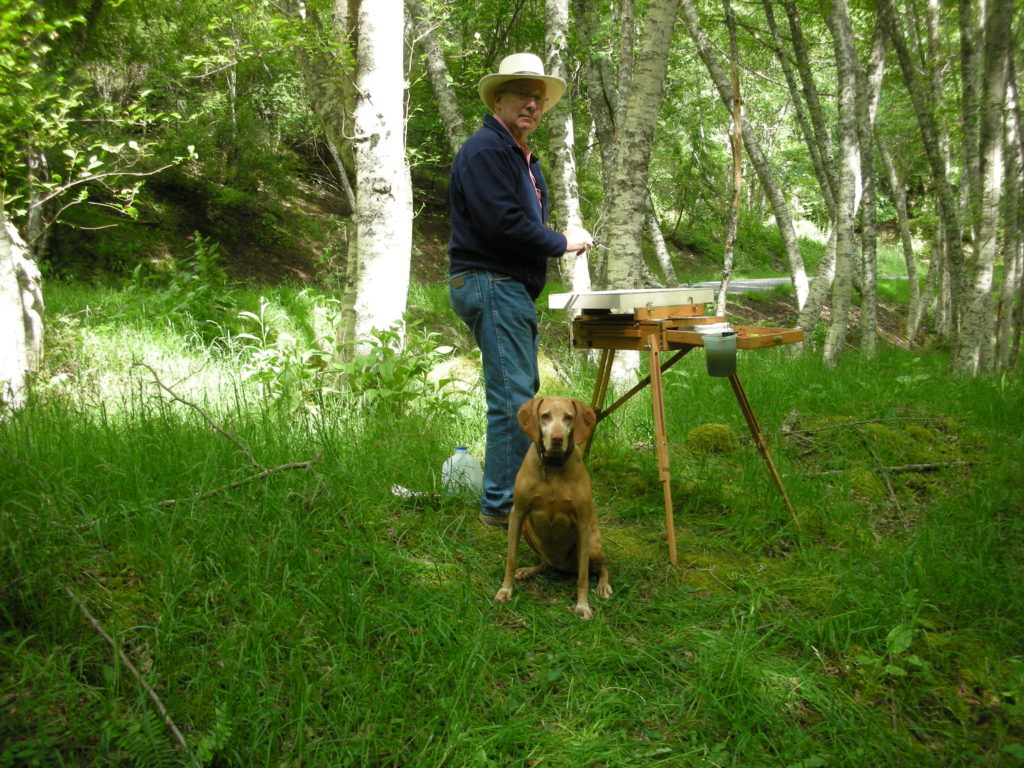 Carl paints primarily from nature and from his travels throughout the U.S. and Europe as well as creating abstract nonrepresentational paintings. He paints mostly with watercolor and acrylic. Carl began painting as a child in Wisconsin, followed by a career as a consulting transportation engineer. In 1993 he resumed his childhood desire of becoming an artist by studying at the Pacific Northwest College of Art continuing education program in Portland, Oregon, in the studio of James Kirk for over 15 years, and with Stephen Quiller.
Carl paints primarily from nature and from his travels throughout the U.S. and Europe as well as creating abstract nonrepresentational paintings. He paints mostly with watercolor and acrylic. Carl began painting as a child in Wisconsin, followed by a career as a consulting transportation engineer. In 1993 he resumed his childhood desire of becoming an artist by studying at the Pacific Northwest College of Art continuing education program in Portland, Oregon, in the studio of James Kirk for over 15 years, and with Stephen Quiller.
Carl has painted extensively in villages throughout France, including Monet’s Giverny garden, Spain and Portugal. Currently he is painting landscapes of the San Juan Islands and the Pacific Northwest as well as abstract nonrepresentational images.
He currently shows his paintings at the Orcas Island Artworks and at the Crow Valley Gallery on Orcas Island, Washington.

